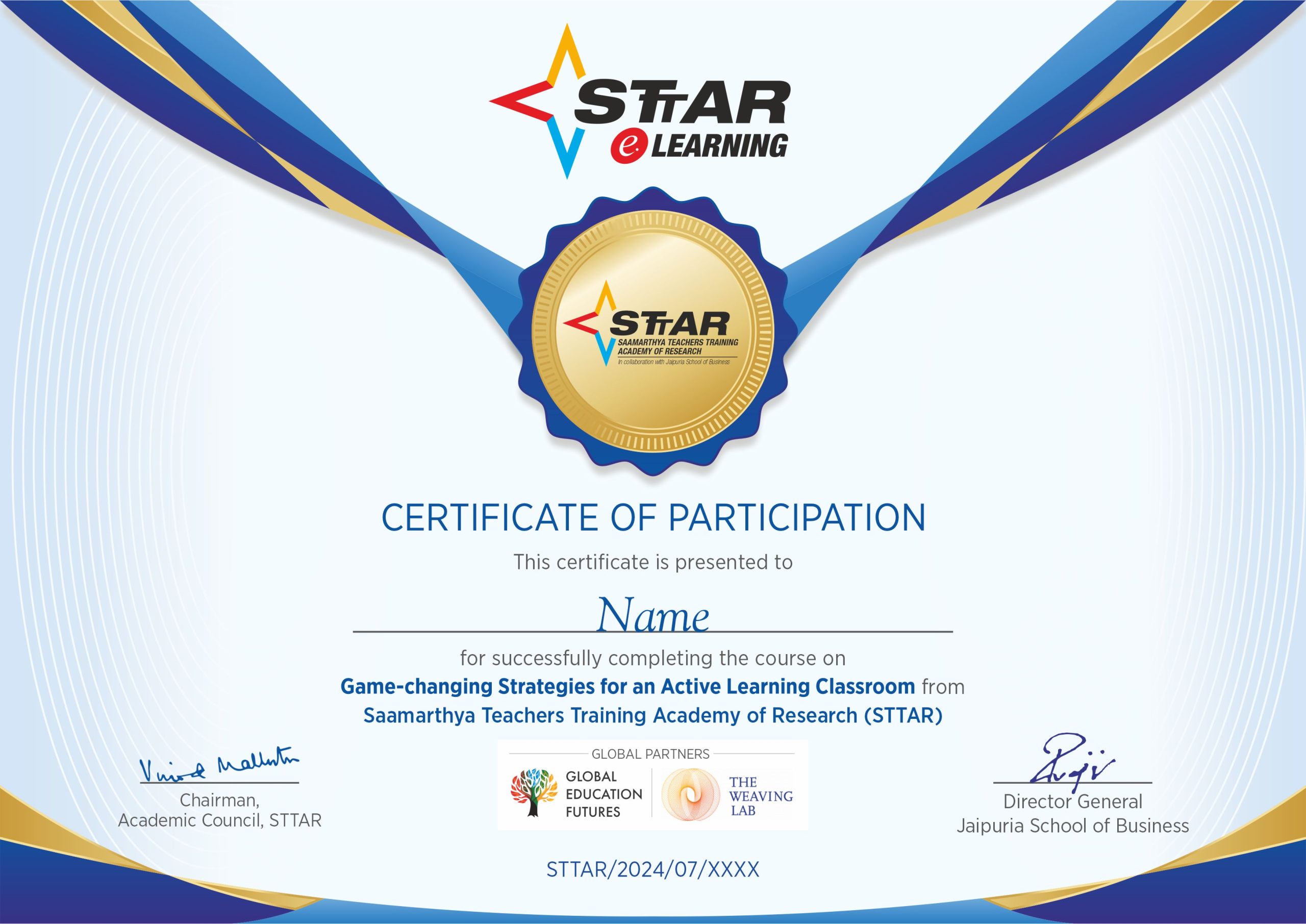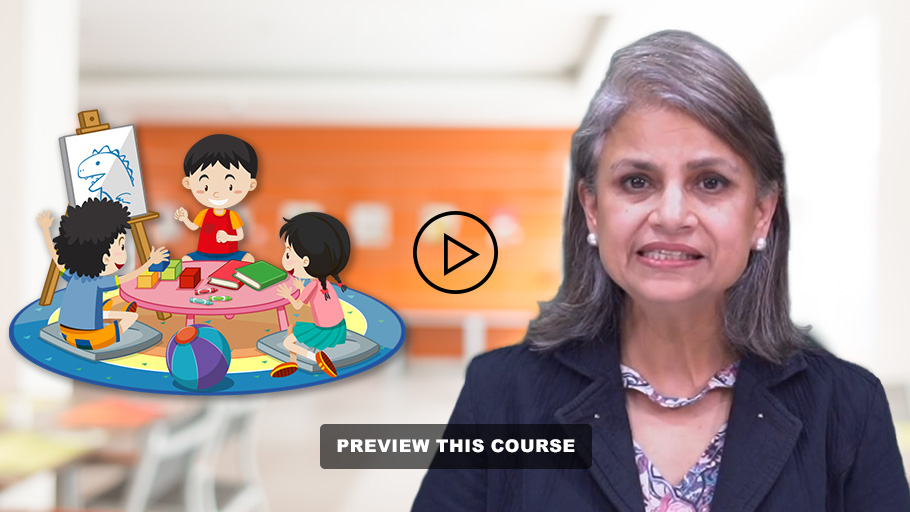Game-changing Strategies for an Active Learning Classroom
Master the cutting-edge strategies to create an active learning classroom for enhanced student engagement and outcomes. Learn from a domain expert with three decades of experience.
By taking this course participants will be able to:
- Build an understanding of the background to and the evolution of AL
- Differentiate between active and passive learning
- Refine the art of asking ‘purposeful’ questions
- Employ instructional strategies and techniques that encourage AL
- Select and use AL techniques best suited for various stages of the lesson
- Encourage critical thinking, problem-solving, and creativity
- Provide opportunities for self-assessment and reflection
- Promote metacognitive skills development in active learning contexts
- Create inclusive learning environment for better student engagement
- Examine and acknowledge the considerations to for planning an AL lesson
Reviews (205)
About Course
The STTAR self-paced learning module on ‘Active Learning’ examines what exactly it means for a child to be ‘actively’ learning. Besides studying the general benefits of Active Learning and the shifts we should be ready for, the course will cover several easy-to-use strategies along with examples across subjects and grades. It will reveal useful techniques to reach out to maximum number of students in your class. Some of the key areas that will be simply and vividly explained include: questioning styles, prompts that trigger thinking, diverse activities that can be employed at various stages of the lesson (beginning, middle and end), the art of staying on track with the desired learning outcomes and the all-important relationship between the lesson plan, the learning outcome and assessment.
About Instructor

Sarita Mathur
Education Consultant
3 hours
26
5
3
All Educators; All Subjects
Lifetime Access
STTAR E-Learning Certificate
239
3 hours
26
5
3
All Educators; All Subjects
Lifetime Access
STTAR E-Learning Certificate
239
Course Structure
- 2.1- What is AL
- 2.2- A Brief History
- 3.1- Cone of Learning
- 3.2- Multisensory Approach
- 3.3- Identifying an AL Question
- Assessment 1 (based on Modules 1,2 and 3)
- 4.1- The Relationship between LOs, LPs and Assessment
- 4.2- Purposeful Questioning
- 4.3- Questioning Strategy Part 1
- 4.4- Questioning Strategy Part 2
- 4.5- Questioning and higher-order thinking
- 4.6- Questioning Strategy Part 3
- 5.1- Tips and Techniques
- 5.2- AL… all the way!
- 6.1- Beginning of the Lesson Part 1
- 6.2- Beginning of the Lesson Part 2
- Assessment 2 (based on Modules 4, 5 and 6)
- 7.1- Middle of the Lesson Part 1
- 7.2- Middle of the Lesson Part 2
- 7.3- Middle of the Lesson Part 3
- 8.1- End of the Lesson Part 1
- 8.2- End of the Lesson Part 2
- 8.3- End of the Lesson Part 3
- 8.4- End of the Lesson Part 4
- 9.1- Shifts and considerations
- 9.2- Talk time and other suggestions
- 9.3- Benefits and wrap-up
- Assessment 3 (based on Modules 7,8 and 9)
- Edgar Dale’s Cone of Learning
- Jigsaw Formation Strategy
- Purposeful Questioning and Prompts
- Some popular digital tools for Active Learning
- Strategies for the various parts of the Lesson
Course FAQs
‘Active Learning’ is an approach to instruction that involves actively engaging students with the course material.
All K-12 educators, all subjects
Teachers will have students that are involved, attentive and excited to learn thereby making teaching more gratifying and pleasurable. They will be able to cover the intended content in a more holistic fashion and merge learning objectives seamlessly finding themselves artfully progressing with the ‘syllabus’ at a delightful and meaningful pace.
Students who are part of an AL teaching environment experience an enhanced ‘joy’ quotient in daily lessons. At a deeper level they will notice enhanced conceptual understanding, better retention, improved comprehension and a better ‘connect’ with the course content.
Yes, many. All with examples.
A teacher can complete this course at her or his own pace and comfort. In one stretch running, it would take approx 3 hours.
No, but it is recommended participants do them for more complete learning
You will receive three assessments during the course.

Earn The STTAR Certificate
All participants will receive a highly valued Certificate of Participation from STTAR and its global partners Global Education Futures and The Weaving Lab from Netherlands.
After finishing the course, you will get a Certificate from STTAR in collabration with our Global Partners – Global Education Futures and The Weaving Lab.
Game-changing Strategies for an Active Learning Classroom
People love learning with STTAR







